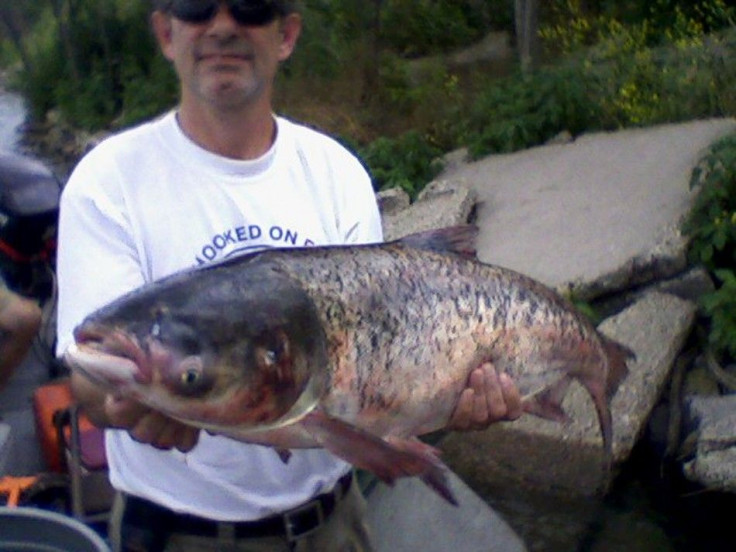Ending Asian Carp Threat To Great Lakes Will Take 25 Years And More Than $18B, Yet Recommended Strategies Might Not Be Foolproof: GLMRIS Report

A project to prevent Asian carp and other invasive species from entering the Great Lakes will take at least 25 years and more than $18 billion, a new report released on Monday by the U.S. Army Corps of Engineers said.
The report from the Great Lakes and Mississippi River Interbasin Study, or GLMRIS, has recommended eight options to keep at least 13 varieties of marine invaders, collectively called aquatic nuisance species, or ANS, out of the Great Lakes, which form a vital component of the local economies in the Great Lakes basin, which is home to more than 30 million people in the U.S. and Canada.
The alternatives included continuing with existing measures such as the creation of permanent physical and electronic barriers separating the Great Lakes from the Mississippi River, but GLMRIS has not recommended any single strategy as the best option.
The study commissioned in 2012, examined a range of options and technologies available to prevent ANS from moving into the Great Lakes from the Mississippi River basins through interconnecting waterways, after earlier studies had showed that such invasive species could threaten the native ecosystem, and the $7 billion recreational and commercial fishing industry in the Great Lakes region.
The study focused on the Chicago Area Waterway System, or CAWS, the 128-mile stretch of canals and channelized rivers in northeastern Illinois and northwestern Indiana, connecting Lake Michigan and the Mississippi River.
The report outlines eight strategies, which include a combination of methods for preventing Asian carp and 12 other aquatic species, including Scud, Grass kelp, Red algae, and a Diatom, from reaching the Great Lakes. The report also elaborates on the cost for each option and their potential risks and impact on local ecology, along with the problems that these strategies could cause for users of the waterline.
However, the study also notes that none of the recommended methods are foolproof, because there is a possibility of intentional or accidental transfer of the species by birds or humans.
According to many experts, the best strategy to prevent Asian carp, such as Bighead and silver carp, which have ravenous appetites, from entering the Great Lakes would be to construct a permanent barrier that would separate the Mississippi River from the lake basin. Several members in Congress also support the separation, but local business groups in Chicago have opposed the move.
“We believe it is clear from the GLMRIS report that one of the alternatives, physical separation, is neither economically feasible nor will it be effective at eliminating all identified pathways for the spread of invasive species, including Asian carp,” Tom Allegretti, president and CEO of the American Waterways Operators, told Ohio.com.
“Severing a critical part of the nation’s water transportation network is too high a price to pay for a solution that is not guaranteed to stop the spread of invasive species,” he said.
Other strategies include setting up ANS Treatment Plants, screened sluice gates and other physical barriers, treating the water with chemicals, using pesticides, and mechanical removal of the invasive species.
However, some experts believe that the existing methods are not fully secure, as water beyond the barriers in the waterways have tested positive for carp DNA, and a Asian carp was spotted on the other side of the twin electric barriers designed to keep them out.
The 232-page report was submitted to Congress on Monday, almost seven years after it was requested.

Carp were introduced to the U.S. in late the 1970s as a management tool in fish farms. However, the fish escaped into the Mississippi River and other water bodies, during floods, and have upended the native ecosystems there. Asian carp, due to their huge size and ability to reproduce, have out-competed native fish varieties, and have also become a dominant presence in several parts of the Mississippi and its tributaries.
© Copyright IBTimes 2024. All rights reserved.






















